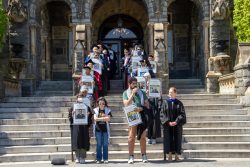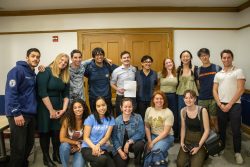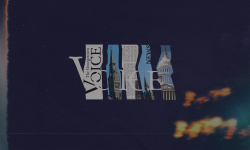A new weekly peer-led discussion group for queer men of color, led by Esteban García (SFS ’15), is set to begin meeting the week of Feb. 22. The group will be a sub-section of GU Pride and sponsored by the LGBTQ Resource Center.
The group arrives on the heels of several other peer-led discussion groups sponsored by the Center including the Queer Women’s Collective, Getting Bi, and EmbrACE. García said, “GU Pride in the past year has taken initiative to kind of cater to the minorities within our community, . . . Part of that diversification was people saying, . . . ‘We have very specific needs and very specific experiences that we can all benefit from talking about.’”
The new group will informally discuss their experiences on a weekly basis, as well as meet once a month with Drs. Matthew Schottland and John Wright, both of whom work in CAPS, for a more structured conversation about the issues faced by queer men of color.
Sivagami Subbaraman, the director of the LGBTQ Resource Center, had the original idea for the group. “As I often say, we are not ‘a single monolithic community,’ but several communities with varying needs,” she said. Subbaraman then asked García, a board member of Pride who has worked at the center for three years, to be the student leader. “For the first time, in the seven years since I have been on campus, there were several men of color [with the Center],” said Subbaraman “I thought it would be an empowering space to have for all of them.”
According to García, the group’s creation was not motivated by any dissatisfaction with GU Pride. “I think that GU Pride itself has been very good about representing minorities . . . [Thomas Lloyd, (SFS ’15), GU Pride president] has been exceptional in his support,” he said. “I think that throughout his time as president . . . he’s made a point of making GU Pride as representative a community as possible.”
Furthermore, García emphasizes the importance of staying united and standing with GU Pride, instead of forming a separate student organization for LGBTQ students of color. “I think that fragmentation is what a lot of times kills movements,” he said. “Georgetown culture is not at a place yet where we can afford to be divided.”
García explains the group was motivated by a desire to discuss the “sensitive intersection” between color and sexuality and to investigate the unique experiences and challenges queer men of color might have navigating two marginalized groups. He mentioned that queer men of color generally come from cultures that are less accepting of their sexualities. Additionally, they may face marginalization from within the larger LGBTQ community. “Largely across the country LGBTQ leaders are white. . . . On the whole, [queer people of color] have less access to positions of leadership and, in some cases, to services or programming,” Garcia said.
Student Maya Ingram (COL ’17), who identifies as a queer woman of color, echoed this, explaining that the public’s idea of a queer person is a “rich, white, gay male.”
“That stereotype separates people from the community,” she said. Ingram also elaborated on what she called the “disconnect” between queer communities and communities of color. “Sometimes people [of color] get fetishized. . . . Sometimes there’s bad feelings about gay rights being like the ‘new’ African-American rights.”
Ingram was supportive of the effort behind the group, but was frustrated that it would not be open to queer women. Though she admitted men likely had unique experiences, she believes “there’s still enough in common with queer men of color and queer women of color that you can collectively have a group and still be aware of the fact that we have different experiences.”
García also explained that there would likely be differences even within the group. “We still have to be very aware that ‘people of color’ is a very broad term. We’re very different. The experiences of a black person at Georgetown is not going to be the same as a Latino person or an Asian person. . . . There is still diversity within us.” García hopes the group may celebrate these differences and possibly bring them up in discussion.
Though García’s discussion focused on the challenges for queer men of color on a national level, he did specify some issues on the Georgetown campus, including recent bias-related assaults on students perceived as queer. “On a campus like Georgetown, unfortunately we are still very much informed by our experiences as people of color.”




